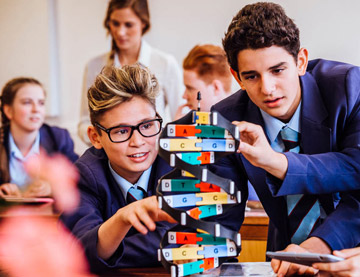Banner Image

Participation in fun educational activities that encourage learning and creativity is important for students for several reasons:
Engagement and Motivation: Fun activities grab students' attention and make learning enjoyable. When students are engaged and motivated, they are more likely to actively participate in the learning process, retain information, and develop a positive attitude toward learning.
Active Learning: Fun educational activities often involve hands-on experiences, problem-solving, and critical thinking. These activities promote active learning, where students actively construct knowledge and understanding through their own exploration and interaction with the subject matter. Active learning enhances comprehension and retention compared to passive learning methods.
Creativity and Innovation: Creative activities encourage students to think outside the box, explore alternative solutions, and express their ideas in unique ways. Nurturing creativity fosters innovation, as students develop the ability to approach challenges from different angles, consider multiple perspectives, and generate new ideas.
Skill Development: Fun educational activities can target a wide range of skills. For example, art projects enhance fine motor skills and self-expression, science experiments promote critical thinking and scientific inquiry, and coding activities develop logical reasoning and problem-solving abilities. These activities help students develop a diverse set of skills that are valuable in various academic and real-life situations.
Confidence Building: When students engage in fun educational activities and experience success, they gain confidence in their abilities. As they tackle challenges, overcome obstacles, and produce creative outputs, their self-esteem and belief in their own capabilities increase. This confidence spills over into other areas of learning and life.
Holistic Development: Fun educational activities promote holistic development by integrating different aspects of learning, such as cognitive, emotional, social, and physical domains. Students learn to collaborate, communicate, manage time, and regulate their emotions in a supportive and stimulating environment.
Long-term Retention: Fun activities create memorable learning experiences. When students are actively engaged, enjoying themselves, and connecting the learning to their interests and experiences, the information is more likely to be retained in their long-term memory. They can recall and apply what they have learned more effectively in the future.
Overall, incorporating fun educational activities that encourage learning and creativity helps students develop a love for learning, cultivates essential skills, and supports their holistic development. It creates a positive and enriching educational experience that goes beyond rote memorization and promotes lifelong learning.
Here are some fun and educational activities that encourage learning and creativity for students:
Think-Pair-Share: Pose a thought-provoking question or problem to the class. Ask students to think about it individually, pair up with a partner to discuss their thoughts, and then share their ideas with the whole class. This activity promotes critical thinking, collaboration, and creativity.
Mini Research Projects: Assign small research projects to students on topics related to the curriculum. Allow them to explore different sources of information, create presentations, or even develop their own creative projects to showcase their findings. This activity fosters research skills, independent thinking, and creativity in presenting information.
Collaborative Storytelling: Start a story and have each student contribute a sentence or paragraph to build a collaborative story. This activity enhances creativity, imagination, and storytelling skills.
Design Challenges: Present students with design challenges, such as building a bridge with specific materials or creating a prototype for a new invention. This activity promotes critical thinking, problem-solving, and creativity in design and engineering.
Gallery Walk: Set up a gallery walk by displaying student work around the classroom. Give students the opportunity to walk around, observe their peers' work, and provide feedback or ask questions. This activity encourages creativity, peer-to-peer learning, and constructive criticism.
Classroom Debates: Organize debates on various topics relevant to the curriculum. Assign students different perspectives to defend and encourage them to research and present well-reasoned arguments. This activity develops critical thinking, public speaking, and persuasive skills.
Simulations and Role-Playing: Create simulations or role-playing activities where students can step into the shoes of historical figures, fictional characters, or professionals in different fields. This allows them to apply their knowledge creatively and develop empathy and critical thinking skills.
Multimedia Presentations: Instead of traditional presentations, encourage students to create multimedia presentations using technology tools. They can incorporate images, videos, audio clips, and interactive elements to engage the audience. This activity develops digital literacy, communication skills, and creativity.
Mystery or Problem-Solving Activities: Present students with mysteries or problem-solving scenarios related to the curriculum. Allow them to work in groups or individually to analyze clues, think critically, and come up with creative solutions. This activity promotes analytical thinking, teamwork, and creativity in problem-solving.
Socratic Seminars: Conduct Socratic seminars where students engage in open-ended discussions about a specific topic. Encourage them to ask thought-provoking questions, challenge assumptions, and engage in critical thinking. This activity promotes active listening, analytical skills, and creativity in generating insightful ideas.
Remember to create a positive and supportive classroom environment that encourages students to take risks, think outside the box, and express their creativity. These activities can make the learning experience more enjoyable, engaging, and memorable for students.
